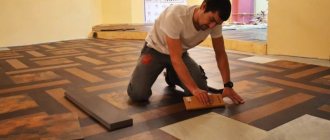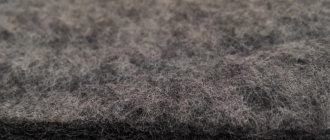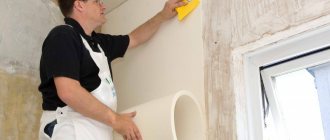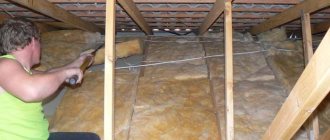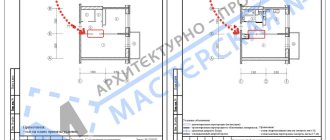The ebb is the outer element of a plastic window in the form of a metal window sill. It is carefully mounted on construction foam and should hermetically protect the window sill area. Installing a low tide is an important step; it determines whether unnecessary moisture will enter the apartment or heat will be lost.
It often happens that the window is installed perfectly, but the sill itself is made a little poorly thought out or of poor quality. When it rains, the drops that fall at low tide make loud noises and splash around. Tides thunder when it rains if:
The metal strip of the ebb is made a little thinner than it should be due to the savings of the builders. The ebb is a little longer than expected and protrudes far beyond the edges of the window. This is a miscalculation of the architect or window installation company. The ebb is poorly secured and there is not enough mounting foam underneath; when struck, the ebb makes a loud sound. This is a poorly executed window installation job. There are no ebb tides or canopies on top, then the water flows in streams directly onto the window and ebb tide. In these cases, every rain occurs for the residents in a very nervous and tense environment. The loud roar of drops prevents you from falling asleep or going about your business. The window has to be closed tightly in order to somehow reduce the noise level in the apartment. The window itself gets splashed heavily.
If the tides thunder when it rains, what should you do? Solutions options:
Contact the company that installed the windows. If the warranty period has not passed, use an expert examination to find out the reason for the noisy behavior of the tides and force the installers to correct the defects. If the height of the window allows, you can independently try to understand the cause of the noise and eliminate it. All work should be carried out after ensuring your own safety. Try shaking the ebb to see if it is securely fastened. Fill the void underneath with foam.
When it rains, watch the drops at low tide and find out the noisiest place; more often than not, the entire low tide thunders due to water getting into a very small area. If the flashing is very long and this is the cause of the noise, try to cut off the outer edge from it.
Place or glue under the ebb any material that reduces noise and vibration - a piece of rubber or polyurethane, or coat it with durable mastic. Replace the ebb with a special plastic or polymer-coated one. This will significantly reduce the noise level.
It must be borne in mind that the ebb is not a decorative part, but a complex element of the window itself; you cannot replace it yourself. By contacting a company that installs PVC windows, you can solve the problem of rattling tides using the advice of experienced craftsmen.
Video on the topic: What to stick on the windowsill to stop the rain from knocking?
The rain is drumming. Soundproofing of the sill (window sill)!
Sound insulation of window drainage
What to do if the rain drums on the slopes?
Sound insulation of low tide on the window
Content
- 1. Introduction
- 2 Ensuring low tide noise insulation during construction
- 3 Do-it-yourself soundproofing of low tide
- 4 Self-soundproofing technology for low tide
- 5 Note
- 6 Contribution of participants
Introduction
An integral part of the window block is the external ebb, which protects the installation seam from the street and gives the finished aesthetic appearance of the windows from the outside.
Since this part is made mainly of steel or aluminum, during rain, hail or melting snow, the sound of drops on the ebb can greatly disturb the residents of the house. The “sound of music” can be endless on dull autumn nights, and consequently interfere with sleep. How to deal with this? We hope this article will help you if you have this problem in your home.
Ensuring low tide noise insulation during construction
First of all, to ensure that the ebb or visor does not make sounds during rain or strong gusts of wind, during the construction period the developer or installers installing window units must follow several rules, if correctly implemented, the sound insulation of the ebb will increase several times .
So, the first rule is to choose the right material thickness. Let us repeat that external drains are made mainly of steel or aluminum, and the resonating effect of the product made from them depends on the thickness of these materials. The thinner the steel (or aluminum), the greater the diaphragm effect the visor or shimmer has. And vice versa, the thicker and more massive the material, the greater its ability to both reflect and absorb sound waves.
Secondly, it is necessary to select the optimal width of the canvas, since it should not protrude too much from the wall of the house. The maximum permissible indentation of the decorative element in question is considered to be 2-3 centimeters, which, given the optimal area exposed to the effects of natural elements, reduces the noise level of this impact.
And finally, the most effective way to reduce noise from external drains or canopies is to use additional installation materials. These can be full-butyl tapes, which are glued to the back of the ebb (or the outer part of the canopy) and PSUL, which is glued in a strip to the slope, preventing the drumming effect of the ebb on the slope of the window block.
Soundproofing low tide yourself
Let us repeat that the most effective method of suppressing noise from external drain elements is to apply butyl tape along the entire length of the installed drain. And, if it so happens that when installing window units in your home, the installers were not concerned about ensuring that the tide was silent, then you can fix this problem yourself. To do this, you need to purchase a special metallized full-butyl tape and glue it to the ebb and visor, if you have one.
The three- to four-millimeter butyl-rubber composition of the adhesive material will guarantee maximum protection from vibrations and noise transmission by the ebb, since its dense structure and heavy mass will block the cutting of the ebb in strong winds or from the impact of raindrops. And the foil coating will additionally provide thermal protection to the window unit if the back part of the ebb is covered with tape, or, conversely, will reflect direct sunlight if the outer part of the additional elements is glued.
Low tide self-soundproofing technology
In order to independently provide the external decorative elements of the window with sound insulation, it is necessary to first dismantle the previously installed sills and canopies.
Next, the removed elements should be degreased so that the butyl rubber-based tapes can easily attach to their surface. Tapes, matched to the width of the ebb, are cut into strips of the required length and glued to the back side of the ebb and the outer side of the visor.
And finally, the elements treated in this way are attached back to the slopes using special polymer soundproofing dowels.
In the end, we can draw the following conclusion: if the developer, when installing windows, did not bother about soundproofing the external parts of the window structures of your house, and the sounds of beating drops or gusts of wind prevent you from sleeping peacefully, then this problem can be eliminated on your own or with the help of specialists, but with minimal financial costs.
Additional fastening
According to the design of most developers, the casting structure is attached only on one side. The bottom edge of the sheet hangs freely in the air and knocks against the façade when exposed to wind. A simple and inexpensive option to reduce noise is to secure the sheet with a few more screws.
- The window sill profile is dismantled.
- On the front part of the ebb, at a distance of 30-40, drill holes for self-tapping screws. Additional screws can be screwed in from the ends or from the top.
- The sheet is installed in its original place and attached first to the frame, and then through drilled holes to the stand ledge or facade.
Despite the cheapness and ease of implementation, this method of fastening also has many disadvantages. When screwing screws in from above, a thin metal sheet may become deformed, and water will accumulate in the resulting depressions.
Soundproofing the balcony
Product prices
- visor or ebb
- roof or canopy
- balcony roof
- Loggia
- Roof
- Loggia with take-out
1 m.p of visor or ebb
- Size/area: 1 m.p.
1 m 2 roof or canopy
- Size/area: 1 m2
1 m 2 balcony roof
- Size/area: 1 m2
Loggia 3000mm * 400mm
- Size/area: 3000mm * 400mm
Roof 3300mm * 1000mm
- Size/area: 3300mm * 1000mm
Loggia 6000mm * 600mm with extension
- Size/area: 6000mm * 600mm
Turnkey repair of the loggia, strengthening of the loggia from 5.5 thousand rubles per 1 linear meter. in installments 0%
English windows from the manufacturer in installments 0%
High-quality glazing of balconies and loggias
Professional balcony repairs, strengthening of the balcony from 15 thousand rubles in installments 0%
Turnkey loggia repair
English windows from the manufacturer
High-quality balcony glazing
Professional balcony repair
Noise insulation from "ELITE BALCON"
What soundproofing material do we use?
The material is called Guerlain - an elastoplastic, homogeneous, rolled material is available on the market of soundproofing materials in the form of a tape with a thickness of 1.5 mm to 3.0 mm and a width of 200 mm, made from synthetic rubbers by extrusion and backed with reinforced foil for strength across the entire width. The following brands of Guerlain tape are produced:
Basically, sound insulation is required when the canopy is enlarged - on objects with a remote location, or when there is a wide ebb that protrudes beyond the perimeter of the glazing by more than 100 - 200 mm. In this case, noise insulation of ebb tides is needed. Sound insulation for low tides is a very small addition to the work on glazing balconies, while increasing comfort significantly.
Company advantages
- Freeze on the first day!
- We work 24/7
- 18 years of work
Still have questions? Leave a request and we will contact you shortly:
Listen to it without Gerden:
How to properly soundproof the canopy and ebb?
So, you have installed a new and beautiful plastic window, which really turned out to be as perfect as you imagined it to be. And your joy lasted until the first rain. No, raindrops did not penetrate the sealed window unit. They just loudly drummed on the ebb or visor, creating in your cozy home or apartment the effect of a rehearsal of a group of professional drummers. Needless to say, this situation is unlikely to suit the vast majority of households. You can't relax in front of the TV while the raindrops are roaring on the metal surface, because you have to turn up the volume on the device a lot. And there is no need to talk about falling asleep in a blissful sleep. In this article we would like to talk about soundproofing methods for window sills and canopies that will help cope with the problems of knocking raindrops.
What causes the visors and tides to rattle?
- Thin metal. If the strip of metal from which the visor or ebb is made is thinner than the required values, then the material will rattle from every raindrop. With this, we think, everything is clear.
- Poor fastening. It happens that ebbs and visors are simply poorly secured with polyurethane foam, as a result of which corresponding vibrations occur. This can happen not only due to a miscalculation by the installers, but also due to the natural destruction of the unprotected layer of polyurethane foam.
- Long low tide. If the length of the ebb or canopy protrudes far beyond the window edges, then the noise from the rain will not be long in coming. Again, the blame can be shifted not only to the installers, but also to the architects of the building, since flashings and visors, for the most part, are produced as standard.
- No visor. If there is an ebb on the balcony glazing, but no visor, raindrops will freely flow onto both the glass and the ebb in full, creating a lot of noise.
- Other reasons. If you have everything in order with all of the above, but the ebb and visor still make a lot of noise when it rains, well, that also happens. In this case, you need not look for reasons, but deal with the consequences. We will tell you exactly how a little later.
How to reduce noise from the street in an apartment?
Of course, high-quality plastic windows with more than three cameras are a prerequisite on the path to silence. But there are also other considerations...
If the apartment room has a balcony or loggia, this already solves half the problem. Glazing a balcony/loggia helps to minimize noise almost completely, at least in a single room. The air cushion between the balcony windows and the room windows dampens sound vibrations.
Ideally, of course, you would need to create a vacuum between the layers of glass or windows, but this is not possible to do at home. If we remember physics, we know that sound travels faster in a dense medium. Sound does not travel in a vacuum. From this we can judge that if the air is cold, the molecules travel sound waves faster. It’s just that an air cushion with an ambient temperature higher than the outside temperature (in winter, for example) will transmit sound worse.
The same can be done with other rooms. Only on the other side - from the inside. As far as the window sill allows (the protrusion of the wall into the room from the standard installed frame), you can install a second window, and it does not have to be two or three chambers, it is important that it is dense. You will get the same “cushion” for sound dampening. The slopes inside (between the frames) can be finished with sound-absorbing materials.
Forest plantings provide excellent, albeit seasonal, sound insulation. Between our house and the railway, the distance is about a kilometer, you understand - trains are not luxury cars - the noise is terrible. When the house was built, two rows of poplar trees were planted in a checkerboard pattern, across the road from the house, between us and the railroad. In the summer, when the leaves bloom, you can hardly hear the iron, although in winter and especially in frosts, everything is exactly the same as it was, but we are grateful even for six months of peace.
Blinds on windows are also good sound insulation. They serve as another barrier to sound vibrations.
If you approach this issue comprehensively - internal soundproofing of walls, additional glazing with high-quality double-glazed windows, sound-absorbing wallpaper in the room, this will certainly give results.
Soundproofing of canopies, ebbs, roofs of balconies and loggias in Kyiv
Incorrectly installed sills, canopies and balcony roofs can deprive their owners of sleep and peace. They look ordinary, but when it rains or winds they begin to rattle and drum so much that it is simply impossible to sleep under this roar. Sound insulation of ebb, canopy or roof, which is carried out in Kyiv by industrial climbers of our company, will help solve this problem quickly and inexpensively.
The work on vibration isolation of canopies and ebbs is not difficult, the whole difficulty lies in the fact that these elements cannot be reached from the apartment if it is located above the first floor. But industrial climbers can access any part of the façade. They will quickly rappel down to the metal parts and eliminate the reasons that make them react so noisily to wind and rain.
For what reasons can the visor make noise?
When installed correctly, window sills can be virtually silent. Why do they sometimes make such noise? There are several reasons:
- Thin metal is an excellent resonator in itself, and it’s not for nothing that it is used to make bells and some musical instruments. Window trims and balcony canopies are made of thin sheet metal, i.e. they are noisy by nature. In order to make them quieter, special measures are required, for example, gluing an elastic material to the metal that dampens sound vibrations.
- Small tilt angle . The sound of falling drops will be loudest if they fall perpendicular to a metal surface. The greater the angle at which the metal is tilted, the quieter it reacts to falling drops. Therefore, visors with a larger angle of inclination (about 45°) are preferable. In addition, such canopies are not convenient for birds to perch on, which means that another source of noise will be eliminated along the way.
- Poor quality fastening of metal parts . If the fasteners do not tightly press the steel sheet part to the place of fastening, then in the wind it begins to vibrate and loosen the fragile connections even more. The amplitude of vibrations gradually increases, the metal product hits adjacent surfaces, producing a rumble.
- The presence of empty space under the metal. Unfilled voids under the tide create a drum effect. In such cases, the best way to soundproof ebbs and flows is to fill the existing cavities with polyurethane foam.
All these shortcomings of the metal elements of the facade can be eliminated by soundproofing the metal elements of the facade, which is best entrusted to industrial climbers.
Prices for noise insulation of a visor
| UNITS MEASURE | PRICE FROM | NOTES |
| Length 3-4 m | 2500 UAH | Lying not rigidly on the balcony (the price is indicated already with the material) |
| Length 6-8 m | 4000 UAH | Lying not rigidly on the balcony (the price is indicated already with the material) |
| 3-5 m | 2500 UAH | Lying on a rigid frame (the price is indicated already with the material) |
| 5-8 m | 3000 UAH | Lying on a rigid frame (the price is indicated already with the material) |
How do we soundproof?
There are several types of materials suitable for soundproofing the canopy on the balcony, roof and ebbs. They are elastic coatings based on bitumen or rubber, which are glued to noisy canopies and ebbs. We decide which material is more suitable in each specific case after reviewing the problem.
Automotive vibration isolation
Vibroplast , intended for vibration insulation in cars, has sufficient resistance to atmospheric factors and can be successfully used for sound insulation of balcony canopies and ebbs. However, this is the most expensive option available.
Adhesive bitumen shingles
Self-adhesive bitumen shingles are a type of roofing that is perfect for soundproofing a metal balcony roof. This coating does a good job of eliminating noise, and it also has a presentable appearance. However, this material is relatively heavy, so before installing it on the roof of the balcony, you need to make sure that the roof structure is securely fastened.
Bitumen roofing tape
This material is specially designed for sound insulation of balconies and windows, canopies and roof overhangs. Bitumen roofing tape has a front layer of foil that protects it from the destructive effects of ultraviolet radiation. The sticky layer has good adhesion and is securely bonded to the metal. It is better to glue the roofing tape in the warm season, because at low temperatures the adhesive layer needs to be heated with a hair dryer.
Ruberoid
Roofing felt is affordable, durable and effective in eliminating noise. It is similar to adhesive bitumen shingles and is used for soundproofing balcony roofs. The advantages of roofing felt include its low cost, and the disadvantages are the difficulty of installation, since it is fused onto the surface of the metal using a gas burner.
How to soundproof a canopy, balcony roofs and ebbs
Of all the metal elements of the facade, only window sills can be available for independent sound insulation, and even then not always. You should not risk your life trying to independently solve the problem of vibration isolation of low tides at height; entrust this matter to industrial climbers. Specialists will cope with this work faster, better and without any risk.
Soundproofing window sills
If during installation of the ebb it was not well secured and placed on the mounting foam, then these omissions are eliminated. Foaming will not only provide sound insulation to the window sill, but will also insulate the window structure. Also, a noise-insulating effect can be achieved by using roofing tape or vibroplast. Before using them, the surface is cleaned and wiped with a degreaser. Then the material is freed from the protective film and glued to the surface of the casting using a roller.
Sound insulation of balcony canopy
First of all, the reliability of the fastening is checked; if necessary, it is strengthened. Soundproofing of the balcony canopy is carried out using self-adhesive roofing tape or automotive vibration insulation, which are glued to a cleaned and degreased metal surface.
Sound insulation of balcony roof
A balcony roof made of sheet steel can be soundproofed using bitumen tape or using adhesive bitumen tiles or roofing felt. The surface to which the materials will be glued is cleaned and degreased. If roofing material is used as a soundproofing material, it is fused with a gas burner. Self-adhesive bitumen shingles or roofing tape are rolled onto the roof surface with a rubber roller.
In conclusion
Soundproofing of a canopy on a balcony in Kyiv is carried out quickly and inexpensively by industrial climbers. If you are concerned about the rattling and knocking of ebbs, canopies and balcony roofs, contact us and you will be surprised how radically and simply this problem can be solved.
Requirements for soundproofing materials
You can make a soundproofing finish for an iron roof using various materials. There is no universal remedy; each case requires an individual approach. Main selection criteria:
- Strength. The product must maintain its integrity under mechanical stress.
- Lack of response to changes in humidity levels and temperature changes.
- Resistance to ultraviolet radiation. The material must not decompose or release toxic substances when heated.
- A product of sufficient thickness will help make the balcony silent.
- A simple and reliable fastening can facilitate the process of soundproofing a roof.
Fulfillment of all conditions will ensure the reduction or complete disappearance of sounds from rain and wind.
How to remove stains and whiten a plastic window sill
Modern windows are beautiful and practical. They do not require special care, insulate the apartment from noise and retain heat. But no matter how carefully you treat the metal-plastic structure, over time, smudges and yellowing appear on it. Then every housewife begins to look for a method on how to clean a plastic window sill from stains so that it becomes like new again.
- What are the types of stains on the windowsill?
- What you need for cleaning
- Which purchased products are best to use?
- Effective folk methods
- How to wash plastic after repair
- Gentle care: the basic rule of a clean window sill
What are the types of stains on the windowsill?
To avoid having to think longer about how to remove stains from plastic window sills, wipe the dust off them daily with a dry soft cloth and wash them once a week with water and some cleaning products.
- To eliminate light stains, dissolve a spoonful of dishwashing gel or a little regular powder in 1 liter of warm water.
- Stir thoroughly until foam forms, soak a sponge in it and walk along the windowsill.
- Then remove the foam with a damp cloth and wipe the surface dry.
When a room or kitchen undergoes renovation, the question of how to clean a plastic window sill from stains and dirt becomes more pressing. Dust and construction dirt accumulate on it in huge quantities, and serious means are needed to remove it.
Most often, housewives encounter the following marks on the surface of the window sill:
- yellow blots left after watering flower pots;
- traces of grease and stubborn stains from dirt and rust;
- contamination from glue or adhesive tape;
- frozen drops of primer, polyurethane foam and stains from other repair work.
If there is a child in the house, most likely you will need a product on how to remove stains from a plastic window sill from crayons, markers or pencils.
What you need for cleaning
The surface of window sills varies. Smooth plastic can simply be washed with a regular microfiber sponge or fleece cloth. But if the texture of the window sill is porous or rough, small particles of dust get stuck in it and are more difficult to wipe off. Use a stiff sponge or brush.
Do not use metal scrapers or abrasive materials for cleaning; they leave behind micro-scratches that spoil the appearance of the window sill and collect various dirt.
A large amount of dirty residue usually collects in the cracks under the frame, and it is difficult to soak it and remove it with a simple sponge. How to clean plastic from stains in hard-to-reach places? Take a toothbrush that has become unusable, wet its bristles with water, scoop up the cleaning agent with them, thoroughly treat the surface and rinse off the powder.
Which purchased products are best to use?
Before you remove stains from a plastic window sill, you need to choose an effective product. Modern household chemicals offer a huge selection in this area.
- Proper. The universal product is sold in liquid and powder form. The composition of the drug is ideal for washing a plastic window sill. Dilute 3 tbsp. l. powder in 5 liters of warm water, stir, wipe the contaminated surface and do not forget to rinse the composition with clean water afterwards.
- Cillit Bang. The product has a pungent odor. It is sprayed onto the plastic, wiped with a sponge, left for a quarter of an hour and removed with a damp cloth. This cleaning removes yellow water stains, coffee stains and other household stains well.
- "Domestos". With its help, you can not only solve the problem of how to wash a plastic window sill from stubborn stains, but also whiten its surface. Apply the substance to a washcloth, scrub the white plastic thoroughly with it, leave for 15 minutes to soak the dirt, and rinse with water. This method can easily get rid of stubborn rust marks.
- "Sanita." It dissolves grease from the windowsill well, although it has a pungent odor. Apply the gel to the surface, rub it over all corners of the window sill, especially carefully treating greasy blots, and after half an hour, remove the product with water and a rag.
- "Pemolux". This gentle cream is suitable for cleansing fresh, small stains. Apply it to the stain, rub it with a dry cloth and, if the stain is not removed, repeat the procedure again.
- Cosmofen 10. This is a drug for those who need to wipe off complex old stains from a plastic window sill. Apply the composition to a napkin, clean the dirt with it and wash the windowsill with water. The drug is toxic, so wear a respirator and ventilate the room after treatment.
Important! Don't forget to wear rubber gloves when using caustic products to avoid damaging your hands.
Effective folk methods
When children or people with allergies live in an apartment, the question of how to wash stains on a plastic window sill is very pressing. Chemicals are not suitable for them, so it is better to pay attention to effective folk methods. Among the available tools you will find useful:
- household soap;
- soda;
- chalk or tooth powder;
- food vinegar.
The easiest way to clean a plastic window sill from yellow stains is with a soap solution. Mix 50 g of household goods in 1 liter of hot water. soap and wash the white plastic with this liquid as thoroughly as possible. Yellow marks, which often appear from water and soot, will disappear without a trace.
How to clean a window sill from yellow stains and whiten it with chalk or dental powder?
- Grind the chalk into dust, measure out 1 tbsp. l. product and pour a little water into it. You should get a homogeneous paste.
- Apply it to the windowsill, rub gently and rinse with water.
- Tooth powder is used in the same way.
Old stains can be scrubbed off with a mixture of baking soda and vinegar. Sprinkle baking soda on the dirt, soak a cloth in vinegar, blot the stained area with it, clean and rinse with water. When using this method, be careful not to leave the baking soda on the plastic for more than 5 minutes. It tends to eat away color, so white spots may form on the windowsill that differ from the main shade of the plastic.
Yellow stains from flower pots can be treated with hydrogen peroxide and after 2-3 minutes, wash the surface with water.
How to wash plastic after repair
During repairs, all people try to protect the window and window sill from dirt. But sometimes blots of primer or polyurethane foam end up on the plastic. How to remove stains on a plastic window sill after construction work?
- First of all, remove the plugs to prevent dust from accumulating in them, and sweep away all debris with a dry cloth.
- Then wash the window sill with soapy water or powder.
- If you need to know how to clean a plastic window sill from stains and dirt from primer or plaster, use cleaning products with mild abrasive substances.
- Treat the stain with the desired gel or cream and wait a few minutes.
- Using a rubber spatula, carefully pry up the softened primer and wash the window sill with clean water.
Polyurethane foam is difficult to clean. If it has dried out, cut off the top with a sharp knife, and generously apply Sanita or another strong preparation to the remains. After 30 minutes, the foam will be saturated, become softer, and it can be removed with a spatula, and the remains can be scraped off with a hard-bristled brush.
When you need to remove yellow stains from tape or glue from a plastic window sill, try White Spirit. Soak a cotton swab in it, gently wipe the sticky area and immediately rinse it with water. Use solvent with caution; some types of plastic may turn slightly yellow when in contact with it.
Gentle care: the basic rule of a clean window sill
So that you don’t have to spend a long time looking for something to remove stains on plastic, remove dirt before it has time to become embedded in the material. Fresh blots can be easily wiped off with a damp sponge and soap.
- After using household chemicals, do not forget to rinse the surface with plenty of water. This will get rid of streaks and prevent yellowing from appearing.
- For cleaning, use only products designed for plastic.
- Do not place hot dishes on plastic; traces of it are almost impossible to remove.
- It is advisable to place oilcloth napkins under flower pots. This will decorate the kitchen and room, and protect the window sill from smudges.
Children's drawings with crayons, pencils or markers are removed with a melamine sponge. You just need to moisten it with water, squeeze it lightly and wipe the stained area.
If you cannot use anything to clean the plastic window sill from yellow stubborn stains or scratches appear on it, call a plastic window service specialist. A professional will quickly polish the surface of the window sill and get rid of old dirt.
Double-glazed window that is not afraid of rain
A good solution is to buy a double-glazed window with increased sound insulation. The Rw coefficient in decibels tells how a window insulates a room from sounds coming from outside. It is especially worth paying attention to this factor if the house is located near busy streets, railways and airports. In this case, you should choose a sound-insulating double-glazed window with an Rw coefficient of 36, 39, 40 or even 50 dB. However, if the noise outside your home does not exceed 60 dBA, then even for the heaviest downpours with thunder and hail, a window with a coefficient Rw = 30 dB is sufficient.
Such a double-glazed window, including laminated glass, can provide additional protection from rain and hail. It is especially important to take this point into account for people living in regions where abnormal hail is a frequent occurrence.
For owners of private houses with residential attics, especially if there is a bedroom or children's room there, it is recommended to install a roof window with a double-glazed window that muffles the sound of rain. This solution guarantees that the attic can be very quiet, even in the event of the heaviest and most aggressive rain.
News
How to clean a plastic window sill from rusty stains
On the eve of the holiday, housewives put on a spree: among other things, they wash plastic windows until they are white. One of the most difficult stains is rust stains. They usually appear under flower pots. How to clean a white plastic window sill from rusty stains, read in this article - we have collected the best recipes from experienced housewives.
How to clean a plastic window sill from rust using improvised means
First of all, housewives try to get rid of stains using improvised means. Let's start with them.
Many people advise cleaning plastic window sills from rust with hydrogen peroxide. Hydroperite is diluted with water 1:1 and the surface is rubbed with this composition. This method is suitable for smooth window sills - they should not be rubbed with abrasives to prevent microcracks in the coating.
An important point: first try on the lower part of the window sill to see how the plastic reacts to liquid. If suspicious stains appear, it is better to use another folk method or a specialized remedy.
Window sills with a rough surface are scrubbed with baking soda or soda ash. But they do not take a dry mixture, but a slurry - dilute the powder with water or hydrogen peroxide. By the way, these compositions also remove stains from coffee and tea leaves - some housewives shared that they water the flowers with tea or coffee to feed them. And along with rust, tea and coffee traces often appear.
Another available method is Sif cleaning agent with a whitening effect. It is quite liquid, so it will not damage the window sill. You can apply it with special wipes for car panels - they will not scratch even smooth plastic.
What are the benefits of specialized cleaning products for plastic windows?
If folk methods and improvised means do not help, the last thing left is to buy a specialized cleaning composition. They are designed to minimize unwanted reactions on the plastic surface. Therefore, you can safely apply it to the windowsill.
Another advantage of special compounds is that they work as antistatic agents. And dust will not settle on the treated window sill as intensively.
How to clean a plastic window sill using a melamine sponge
Housewives praise this “tool” vying with each other. Melamine sponge copes well with difficult stains and rust is no exception. To remove a stain, you don’t even have to use a cleaning agent—the sponge effectively removes any traces.
The only disadvantage of this method is that the sponge does not last long - during the washing process it crumbles. But one is enough to clean the entire window - not only the window sill, but also the frames.
It is not recommended to wipe glass with melamine sponges - stains will remain.
Do-it-yourself window soundproofing
To eliminate or reduce the intensity of noise, it is not necessary to install expensive soundproofing windows. You can make soundproofing yourself:
- Seal the sash against the frame. During operation of the window, its clamping density decreases and it can be adjusted independently. To do this, you need to open the window completely, check the hinges and tighten the fastening screws inside the open sash. To do this you will need a hex wrench and a little force. As a result of these manipulations, the sash will be pressed much tighter; it may have to be closed by force. The gap between the opening and the sash will disappear completely, due to which the sound-proofing and heat-insulating properties will increase.
- Renewing the opening and sealing the window seam. To get to the installation seam you need to remove the slopes and the window sill. It is important to look at the structure from all sides, remove damaged elements of the polyurethane foam, clean everything and reseal it. To do this, you can use foam or a good sealant. It is important to pre-apply a primer in order to increase the adhesion of the materials. If there is a gap between the wall and the slope, mineral wool can be placed in it, which will additionally create heat and sound insulation. There is no need to allow voids under the PVC slopes. This way we get a window opening with increased sound insulation. This method is not suitable if the slopes are made of bricks, decorative stone, or plasterboard. Or rather, if they are made of plasterboard, then they will have to be completely redone.
- Replacing the window sill, since various sounds most often penetrate through it. You can replace it without touching the window slopes. The plastic window sill can be replaced with stone or wood, which have high insulating properties. You can also cover it with noise-proof film and install it back. In this way, you can additionally absorb 5-7 decibels from the street.
- Window modernization. Replacing glass can turn a standard double-glazed window into soundproof windows. There is an unlimited number of different glasses on the construction market, differing in width, thickness, fragility, density, quality, heat-insulating and noise-absorbing properties. To reduce noise levels, it is recommended to replace the glass with a thicker laminated coating. You can use triplex, which guarantees silence, warmth and comfort in the house.


